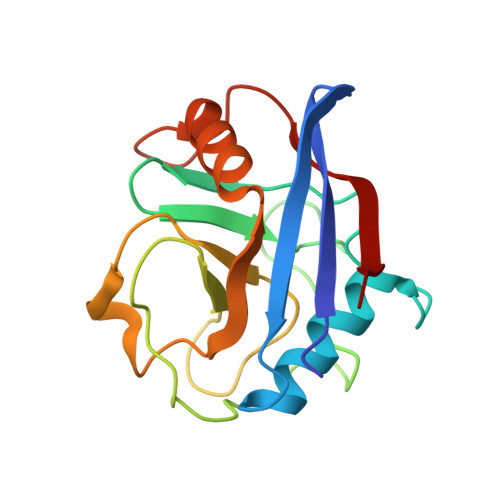Structure of human cyclophilin A in complex with the novel immunosuppressant sanglifehrin A at 1.6 A resolution.
Kallen, J., Sedrani, R., Zenke, G., Wagner, J.(2005) J Biol Chem 280: 21965-21971
- PubMed: 15772070
- DOI: https://doi.org/10.1074/jbc.M501623200
- Primary Citation of Related Structures:
1YND - PubMed Abstract:
Sanglifehrin A (SFA) is a novel immunosuppressant isolated from Streptomyces sp. that binds strongly to the human immunophilin cyclophilin A (CypA). SFA exerts its immunosuppressive activity through a mode of action different from that of all other known immunophilin-binding substances, namely cyclosporine A (CsA), FK506, and rapamycin. We have determined the crystal structure of human CypA in complex with SFA at 1.6 A resolution. The high resolution of the structure revealed the absolute configuration at all 17 chiral centers of SFA as well as the details of the CypA/SFA interactions. In particular, it was shown that the 22-membered macrocycle of SFA is deeply embedded in the same binding site as CsA and forms six direct hydrogen bonds with CypA. The effector domain of SFA, on the other hand, has a chemical and three-dimensional structure very different from CsA, already strongly suggesting different immunosuppressive mechanisms. Furthermore, two CypA.SFA complexes form a dimer in the crystal as well as in solution as shown by light scattering and size exclusion chromatography experiments. This observation raises the possibility that the dimer of CypA.SFA complexes is the molecular species mediating the immunosuppressive effect.
Organizational Affiliation:
Protein Structure Unit, Novartis Institutes for BioMedical Research, CH-4002 Basel, Switzerland. joerg.kallen@pharma.novartis.com















